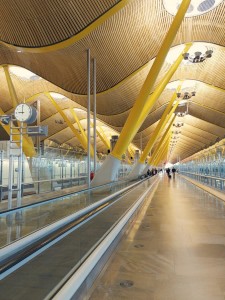A few weeks ago, Richard Rogers retired from architectural practice. One of the UK’s top architects, this marks the end of an illustrious career portfolio which includes the striking, modern landmarks of the Lloyd’s building and the O2 arena in London. In this post, we look back at some of his key works and what these meant for architectural practice more broadly.
Born in Italy, Rogers moved to the UK as a young child. As he grew up, his architectural skills were honed at a range of institutions, including the Architectural Association School of Architecture in London and Yale School of Architecture in the USA. At the latter, he met fellow student Norman Foster, with whom he set up an architectural practice with in England in the 1960s.
Early projects
In the late-1960s, Rogers was commissioned to design a glass cube house in Essex, framed with I-beams. This modernist, hi-tech style continued in subsequent works into the 1970s, including the use of standardised components to make energy-efficient buildings.
Perhaps most well-known at this time was his design of the Pompidou Centre in Paris, which he developed with Italian architect Renzo Piano. The unique way in which the services for this building (water, heating, etc.) are located on the exterior allows the internal spaces to remian free from clutter. Although the building attracted widespread shock among Parisians when it was built, it is generally a widely-loved Parisian landmark today.
The Lloyd’s Building in London, which Rogers designed in the 1980s, was also subject to some controversy. Again, the building’s services, including lifts, staircases and water pipes, are on the outside of the structure, leaving open space inside. The building was Grade I listed in 2011 in recognition of its fame.
How cities are used
In his later career, Rogers devoted a lot of his attention to sustainability and the ways cities are used. He became quite vocal in political discussions about urbanism, setting up the Urban Task Force at the request of the UK government in the late 1990s to identify causes of urban decline and set out a vision for the future. The task force wrote a white paper, ‘Towards an Urban Renaissance’, which set out more than 100 recommendations for future city designers.
In the early 2000s, Rogers continued to work closely with government, advising mayors of London and Barcelona on urban design strategies.
His later works
Alongside his political engagements, Rogers created additional works that were, like his earlier works, simultaneously popular and criticised. Of particular note was his design of the then Millennium Dome (now the O2 arena), which received widespread criticism in the run-up to the new millenium due to its cost.
The ‘inside-out’ works of Richard Rogers remain icnonic to members of the public and architects alike. The way his designs strive for uncluttered, well-lit internal spaces has provided inspiration in our work and we wish him all the best in his retirement.

